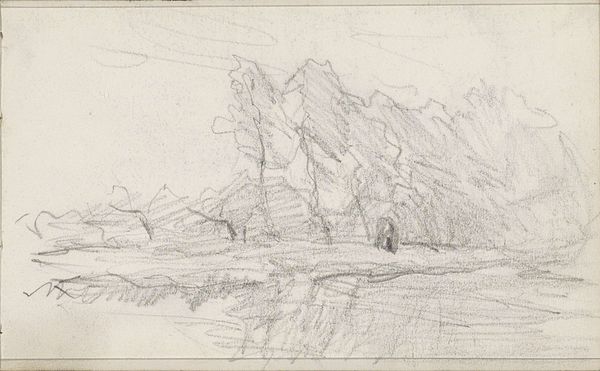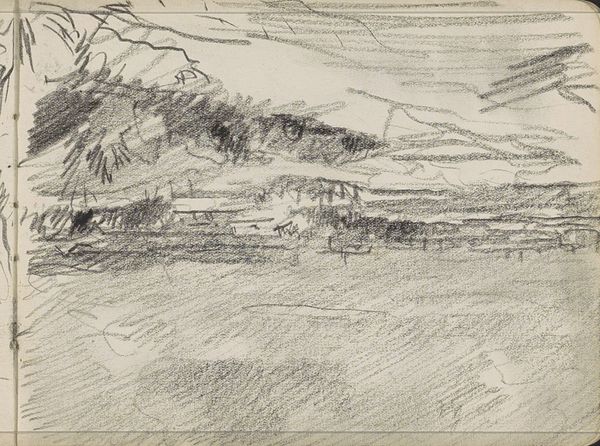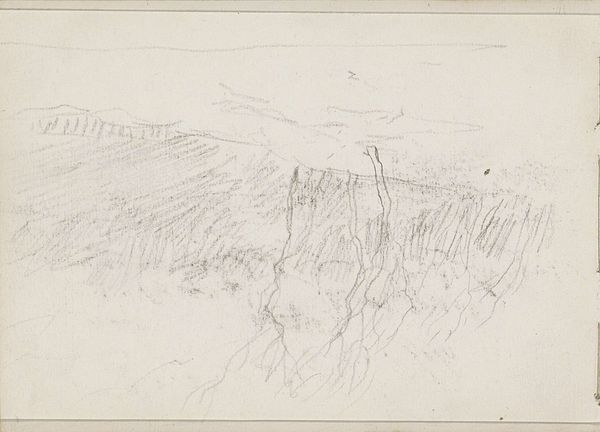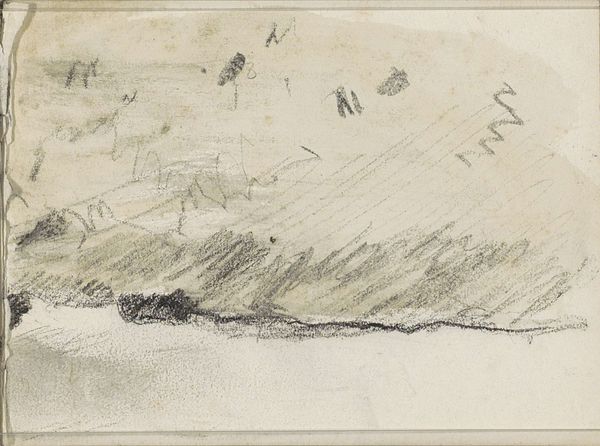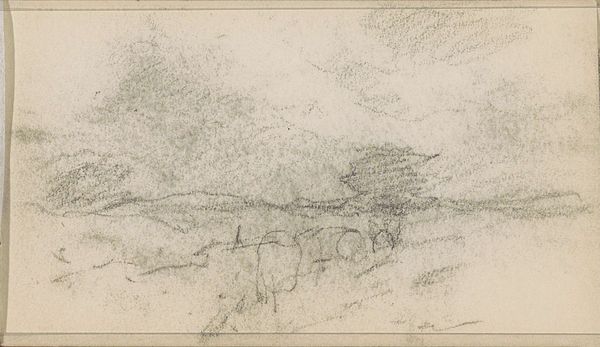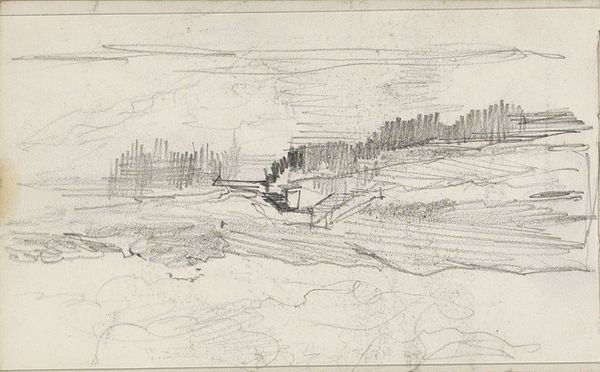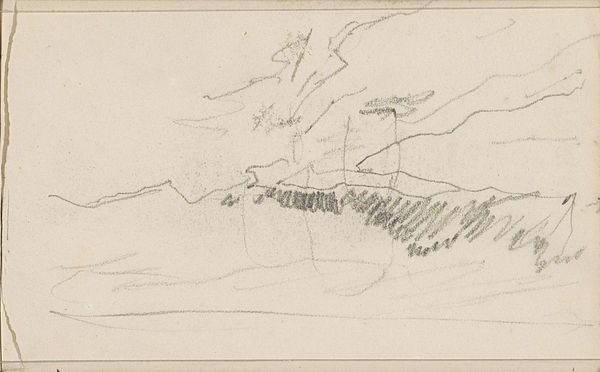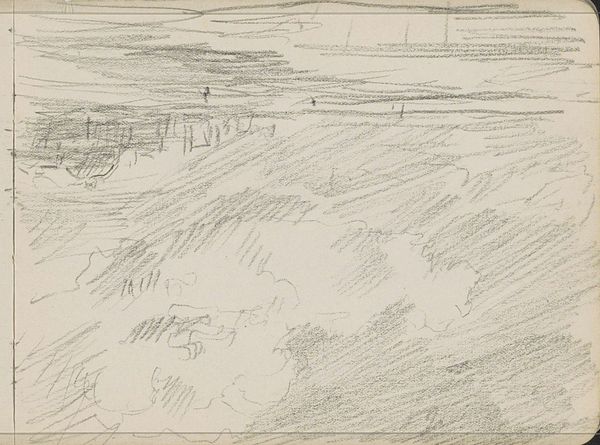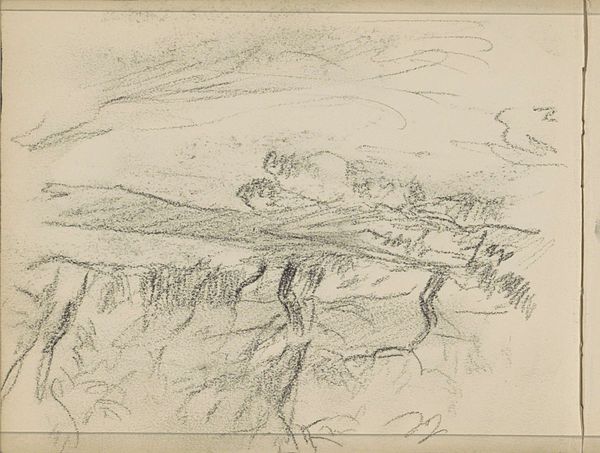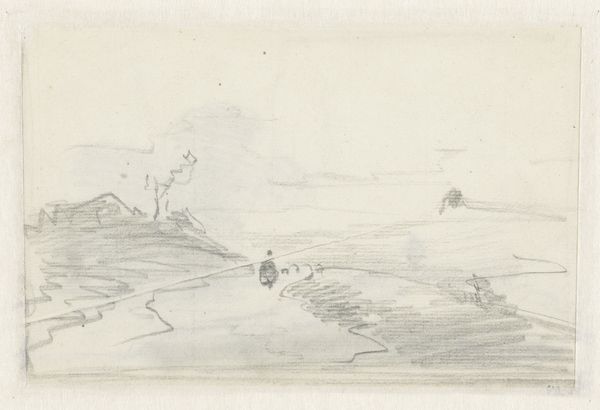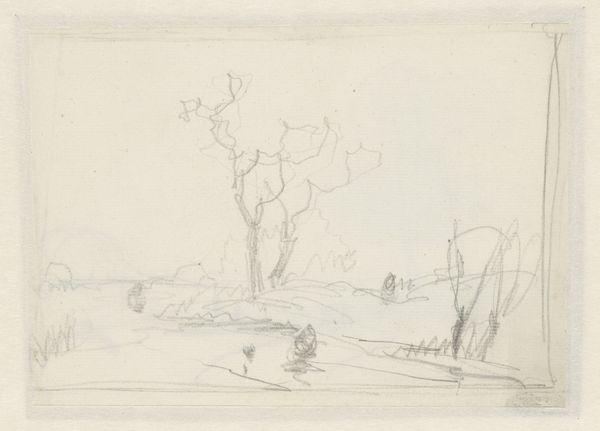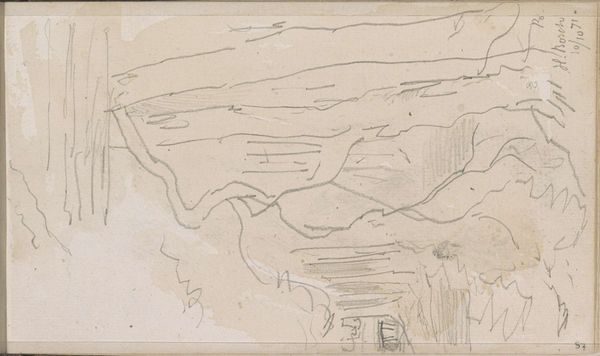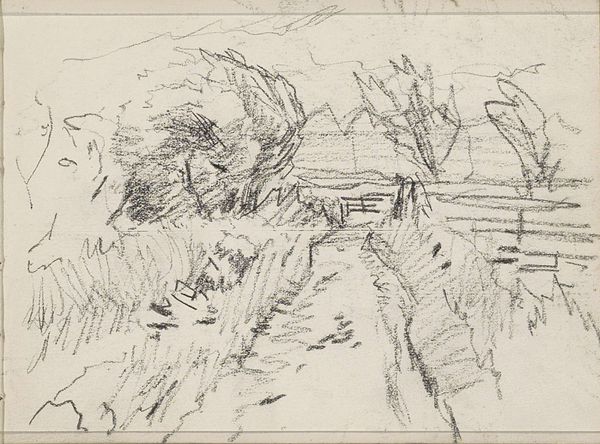
drawing, pencil
#
drawing
#
impressionism
#
pencil sketch
#
landscape
#
pencil
#
naturalism
#
realism
Copyright: Rijks Museum: Open Domain
Curator: This is "Heuvellandschap," or "Hill Landscape," a pencil drawing by Anton Mauve, dating roughly from 1848 to 1888. Editor: It has a certain desolate quality, doesn't it? The sky feels heavy, pressing down on the landscape below. It's all rendered in very muted grays, making the whole scene seem quite somber. Curator: Mauve, working within the Hague School, was very interested in capturing the natural light and atmosphere of the Dutch landscape. I wonder if the sketch hints at land use. Was this space in a moment of transition, such as enclosure and land grabbing that was rampant in Europe? Editor: That's an interesting point! For me, I see a narrative woven in the subtle details. For example, that striking tree with what looks like broken branches? It resonates with me of vulnerability and resilience. I mean, look how deliberately Mauve renders those skeletal limbs! It seems to convey more than mere landscape. Curator: Exactly. The barrenness echoes the profound changes that impacted rural communities throughout Europe during industrialization and rapid urbanization. The shadows are thick, but there's also space for an artist's impression of this transformation's toll. The political resonates deeply with landscape paintings because it concerns labor and livelihood, as well as our relation to ecology. Editor: The symbolism, as you mentioned, speaks to those historical disruptions. Beyond just social issues, the somber tonality also speaks to psychological symbolism. I find the muted palette also speaks to melancholy; each mark of pencil seems to question impermanence. Curator: These open spaces became contested ground—physically, politically, and also artistically, right? Artists grappled with depicting this changing landscape in ways that resonated with contemporary social and political consciousness. What might have the artist aimed to do through these somber, natural renderings? Editor: That is such a pivotal question that is up to the individual! For me, "Heuvellandschap" speaks to both the internal landscape of the individual psyche as well as reflecting a collective cultural identity rooted in that landscape, regardless of transition or temporality. It holds space for those emotional and historical burdens in each careful sketch, you know? Curator: Thank you, both personally, as well as curatorially, this resonates. Editor: Mine too! Thanks!
Comments
No comments
Be the first to comment and join the conversation on the ultimate creative platform.
